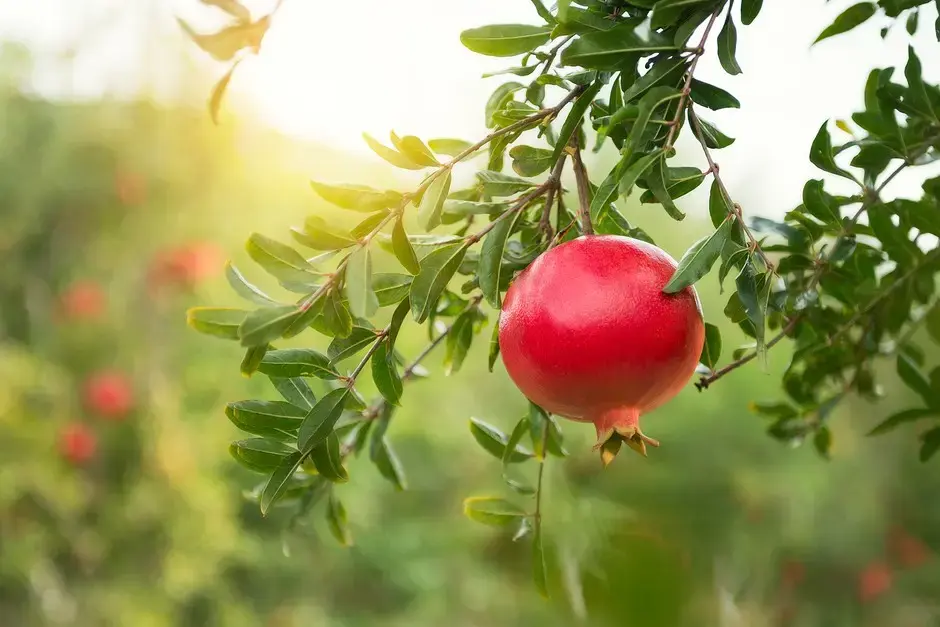
Appearance:
Skin: The Kesar pomegranate is known for its vibrant, soft, and shiny ruby-red or deep reddish-pink skin. The rind is generally medium-thick and leathery, making it relatively easy to peel.
Shape: It's typically round to slightly oblate (flattened at the poles) and medium to large in size.
Arils (Seeds): Inside, the fruit is packed with hundreds of blood-red to deep ruby-red arils. These are the juicy, translucent sacs that surround the small, soft seeds. The intense color of the arils is a key characteristic.
Flavor Profile & Aroma:
Taste: Kesar pomegranates are highly celebrated for their sweet and juicy taste, often with a slight, pleasant tangy punch that balances the sweetness beautifully. They are not overly tart, making them appealing to a wide range of palates.
Aroma: They have a fresh, sweet, and characteristic pomegranate aroma, which becomes more apparent when the fruit is cut open.
Texture:
Arils: The arils are bursting with juice and have a tender, yet slightly firm consistency.
Seeds: A significant advantage of the Kesar variety is that its seeds are generally soft and edible, which enhances the eating experience as you don't have to spit them out. This soft-seeded nature is a major factor in its popularity for fresh consumption.
Size & Weight:
Kesar pomegranates are typically medium to large, with an average fruit weight often ranging from 250 to 450 grams.
Seasonality & Availability (in India, including Kochi):
Pomegranates, including Kesar, have multiple flowering and fruiting seasons (known as "bahars") in India, allowing for relatively good year-round availability.
The primary harvesting seasons are generally:
Mrig Bahar (monsoon flush): Fruits available from June to August.
Hasta Bahar (autumn flush): Fruits available from October to December/January.
Ambe Bahar (spring flush): Fruits available from February to April/May.
This staggered production means you can usually find Kesar pomegranates in markets like Kochi for a significant portion of the year, though peak availability and quality might vary.
Other Notable Characteristics & Uses:
Nutritional Powerhouse: Pomegranates are often termed a "superfood" due to their rich nutritional profile. Kesar pomegranates are excellent sources of:
Antioxidants: High levels of polyphenols and anthocyanins, which contribute to their deep red color and offer significant health benefits, including reducing inflammation and supporting heart health.
Vitamin C and K: Essential for immunity, blood clotting, and bone health.
Dietary Fiber: Aids in digestion.
Minerals: Including potassium and folate.
Culinary Versatility:
Fresh Consumption: Best enjoyed fresh, either by eating the arils directly or adding them to fruit salads.
Juice: Highly favored for making fresh, vibrant juice due to their juiciness and sweet-tangy flavor.
Garnish: The beautiful red arils make an attractive garnish for desserts, savory dishes, and cocktails.
Other Uses: Can be used in jams, jellies, sauces, and even in some savory preparations.
Commercial Importance: Kesar is one of the most widely cultivated and economically important pomegranate varieties in India, known for its high yield and export quality.
In essence, the Pomegranate Kesar is a premium Indian variety, celebrated for its striking ruby-red appearance, perfectly balanced sweet-tangy flavor, abundant juicy arils, and highly desirable soft seeds, making it a favorite for fresh consumption and a nutritious addition to any diet.

